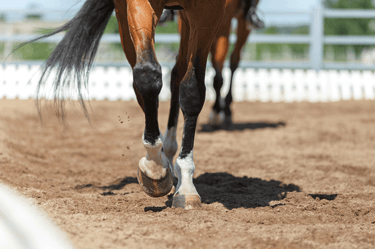Floyd Fain
March 01, 2017 Your arena serves a specific purpose, and so should the arena drag you choose to maintain it.
Your arena serves a specific purpose, and so should the arena drag you choose to maintain it.
Depending on whether your arena is outdoors or indoors, whether you need commercial-grade or personal-use equipment, and the amount and type of footing you use for different disciplines, the drag should at the least be durable, adjustable and flexible enough to handle changes in environment and foot traffic.
Red Master Harrow’s arena drag expertise is based on years of providing equipment to some of the top arenas in the country. Here are some expert tips for choosing a drag that works for you.
First, know the vocabulary of drags (or harrows):
- Ripper: The ripper does what its name suggests – it (gently) rips the footing from the bottom up to mix and aerate the footing.
- Gauge wheel: These wheels maintain a level cutting surface so that differences in tractor size and weight don’t affect the quality of the drag.
- S-tine: These tines loosen up clods and fluff the ground, to add air to the soil – which fosters a more “cush” surface for your horse.
- Paddle wheel: This helps push fiber into the sand, helping to avoid clumping while it contributes to an optimum surface.
- Float pan: This compresses the surface to maintain consistency.
1. Have The Right Plan
Another insider, George Chatigny, manager of the Los Angeles Equestrian Center, told HorseChannel.com what he expects in an arena drag:
- The right tractor for the job, one that works smoothly with your harrow equipment.
- An adjustable level on the drag, with the teeth set to the correct depth (dig too deep and you risk mixing your base into the footing).
- A regimen of watering to support the arena drag.
2. Width Makes A Difference
The insiders at StableManagement.com call the width of the rake a critical dimension. “The rake must be sufficiently wider than the tractor’s wheel track to erase the tire tread depressions in a smooth turn,” they say.
For pulling the rake, “you’ll need at least two tractor horsepower for each foot of rake width. You may need more pulling power for a rotary implement that turns and spreads sand.”
3. Rip Like The Experts
You may never need the horsepower required to maintain a racetrack, but the same principles apply to maintenance.
Track superintendent Steve Wood told Thoroughbred Owners of California that on his track, the watchwords are “rip and rototill.” This process, he says, “basically consists of digging up the surface of the track six inches, rolling it back down before watering, and harrowing.” Especially in California, with its drier climate and clay-based track footing, regular rips help maintain a uniform surface and provide the necessary “cush” (without becoming too deep) for race horses to gain traction and spring.
Compare those needs to those of a jumper or reiner, whose legs go through similar stresses, and the importance of a reliable arena drag (and a consistent schedule of its use) becomes clearer than ever.
Are you interested in investing in a quality arena drag? Then contact Red Master Harrow. We can set up a call to discuss your needs and explore the best options for you. You and your horse’s safety and performance are our top priorities.

